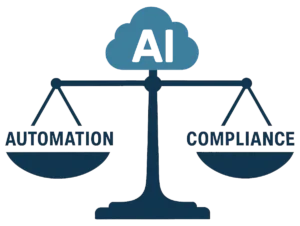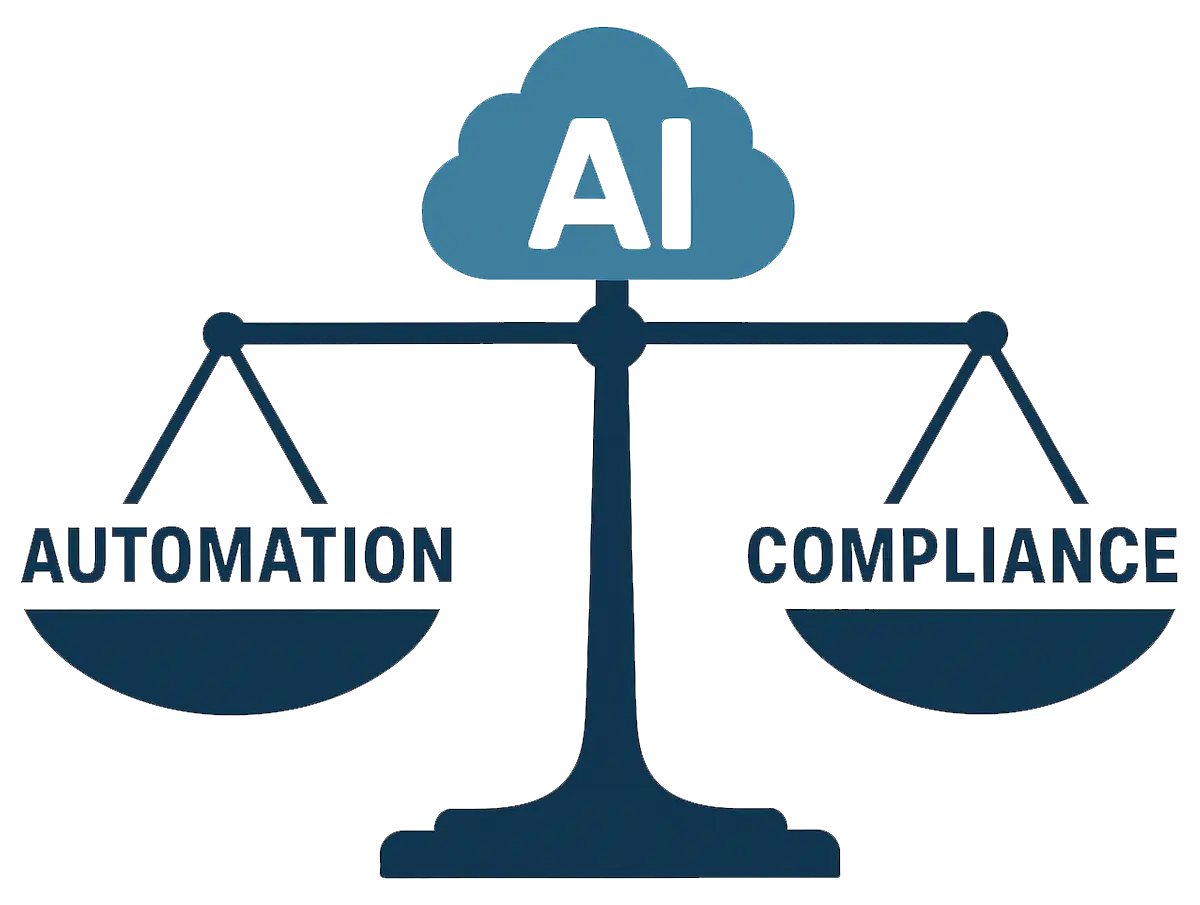 Artificial intelligence (AI) is no longer a distant concept; it is a practical tool that is transforming industries such as banking, retail, and healthcare. In the life sciences and manufacturing sectors, quality systems are crucial for achieving this impact. From predictive analytics to intelligent document management, AI has the potential to streamline processes that have traditionally been manual, repetitive, and time-consuming. But as with any innovation in regulated industries, opportunity comes with responsibility. Organizations must find ways to harness the efficiencies of AI while maintaining strict compliance with FDA, EMA, ISO, and other global standards. The challenge lies not only in AI’s implementation in quality systems, but also in ensuring it is done responsibly, transparently, and compliantly.
Artificial intelligence (AI) is no longer a distant concept; it is a practical tool that is transforming industries such as banking, retail, and healthcare. In the life sciences and manufacturing sectors, quality systems are crucial for achieving this impact. From predictive analytics to intelligent document management, AI has the potential to streamline processes that have traditionally been manual, repetitive, and time-consuming. But as with any innovation in regulated industries, opportunity comes with responsibility. Organizations must find ways to harness the efficiencies of AI while maintaining strict compliance with FDA, EMA, ISO, and other global standards. The challenge lies not only in AI’s implementation in quality systems, but also in ensuring it is done responsibly, transparently, and compliantly.
This article examines how AI is transforming quality management, the regulatory considerations organizations must address, and best practices for striking a balance between automation and compliance.
The Promise of AI in Quality Management
At its core, quality management is about ensuring consistency, accuracy, and safety. AI introduces new ways to achieve these goals by automating routine tasks and uncovering insights hidden in large data sets.
Key benefits include:
- Automated data capture and monitoring – AI-enabled sensors and systems can capture manufacturing and testing data in real time, reducing manual entry errors and increasing the reliability of data.
- Pattern recognition for early risk detection – Algorithms can identify subtle trends or anomalies that may indicate quality issues long before they become critical.
- Enhanced accuracy in documentation – Natural language processing (NLP) tools can review, organize, and even draft documents, reducing the time required for compliance-heavy paperwork.
- Predictive analytics for proactive improvements – Rather than reacting to deviations, AI can forecast potential risks, allowing teams to take preventative action.
For organizations under pressure to improve efficiency without sacrificing compliance, these capabilities are compelling. Yet, the more responsibilities handed to AI, the greater the regulatory scrutiny.
Regulatory Landscape and Expectations
Every organization operating within highly regulated environments knows that innovation is only valuable if it can withstand scrutiny. Regulatory agencies are beginning to grapple with how AI fits into established frameworks.
- FDA (U.S.) – Guidance such as 21 CFR Part 11 emphasizes requirements for electronic records and signatures, while Good Manufacturing Practice (GMP) regulations demand data integrity, validation, and traceability. Any AI tool used in quality systems must meet these requirements and be validated for its intended use.
- EMA (Europe) – The European Medicines Agency places a strong focus on pharmacovigilance and GMP. With increasing digitalization in pharmaceutical manufacturing, EMA inspectors are keenly interested in how AI-driven processes maintain accuracy and reliability.
- ISO Standards – Standards such as ISO 9001 and ISO 13485 require robust quality management system documentation, risk management, and process consistency. AI tools must be integrated in a way that maintains these fundamental principles.
While regulators acknowledge the value of digital transformation, their priority remains unchanged: protecting patients and ensuring product safety. This means AI adoption must be accompanied by rigorous validation, transparent documentation, and evidence of human oversight.
Key Challenges of AI in Quality Systems
The promise of AI is significant, but so are the risks if it is implemented in a rushed or poorly managed manner. Common challenges include:
- Data Integrity & Validation – AI systems must be validated like any other computerized system. Organizations must prove that the algorithm works consistently, accurately, and reliably within its intended scope.
- Transparency & Explainability – Many AI models operate as “black boxes.” In regulated industries, auditors and inspectors require clear evidence of how decisions are made and implemented. Without explainability, trust in AI-driven outputs is limited.
- Risk of Over-Automation – Human judgment remains essential in quality decisions. An overreliance on automation can create oversight gaps, particularly in areas requiring ethical or patient-focused decision-making.
- Vendor Qualification – Third-party AI tools are increasingly common, but companies remain responsible for their compliance. Vendors must be thoroughly vetted, and their systems qualified to meet regulatory expectations.
These challenges are not insurmountable, but they underscore the need for a balanced and strategic approach.
Best Practices for Balancing AI with Compliance
Successful integration of AI into quality systems requires a structured approach that addresses both innovation and compliance.
- Validation of AI Systems
- AI must undergo the same rigorous validation as other computerized systems. This means demonstrating accuracy, repeatability, and reliability under defined conditions. Validation plans should be risk-based and include test cases that reflect real-world scenarios.
- Human-in-the-Loop Oversight
- Automation can streamline decision-making, but humans must remain accountable. Establishing “human-in-the-loop” processes ensures that AI recommendations are reviewed and approved by qualified professionals before final decisions are made.
- Audit Readiness
- Every AI-driven activity should be documented. Clear audit trails must show how data was captured, how decisions were made, and who reviewed them. Inspectors will expect this level of transparency.
- Change Management & Training
- Employees must be prepared to work alongside AI. Training programs should focus not only on how to use AI tools, but also on understanding their limitations. Change management strategies help ensure adoption without resistance.
- Vendor Risk Management
- Organizations should establish a vendor qualification program specifically for AI providers. This includes assessing their compliance posture, data integrity practices, and ability to support audits.
By embedding these practices, companies can use AI as a tool that enhances compliance rather than undermines it.
Case Examples & Applications
AI is already being applied in real-world quality settings. A few notable use cases include:
- Deviation Management & CAPA Trending – AI tools can analyze large volumes of deviation and CAPA records, highlighting recurring issues and suggesting preventative actions. This aligns with broader efforts in continuous improvement initiatives, where data-driven decision-making plays a critical role.
- Intelligent Document Control – NLP can scan regulatory documents, identify required sections, and ensure compliance with FDA or EMA submission standards.
- Predictive Quality Risk Management – By monitoring manufacturing data streams, AI can forecast quality deviations before they occur, reducing costly recalls. (See also our post on predictive quality risk management).
- Clinical Trials & Pharmacovigilance – AI can monitor adverse event reports and clinical trial data more efficiently, flagging potential safety issues in near real time.
These examples demonstrate how AI can both improve efficiency and strengthen compliance if implemented thoughtfully.
The Future of AI and Compliance in Quality Systems
Regulatory agencies are beginning to issue draft guidance on the use of AI, but the frameworks are still evolving. One area of focus is explainable AI (XAI), which aims to make algorithmic decisions more transparent and auditable.
In the future, we may see “AI-augmented compliance systems” where machine learning continuously monitors quality operations, flags potential risks, and provides data-driven insights—all while generating compliance-ready documentation automatically.
Organizations that prepare now by adopting AI responsibly will be better positioned as regulatory expectations mature.
Conclusion
Artificial intelligence offers a powerful opportunity to transform quality systems—automating tasks, predicting risks, and improving accuracy. Yet, in regulated industries, the true test is not technological capability but regulatory compliance.
Balancing automation with compliance requires validation, human oversight, documentation, and careful vendor management. With the right approach, AI can become not only a driver of efficiency but also a partner in strengthening compliance.
The message is clear: AI will not replace compliance—it will enhance it for organizations ready to adopt it responsibly.

